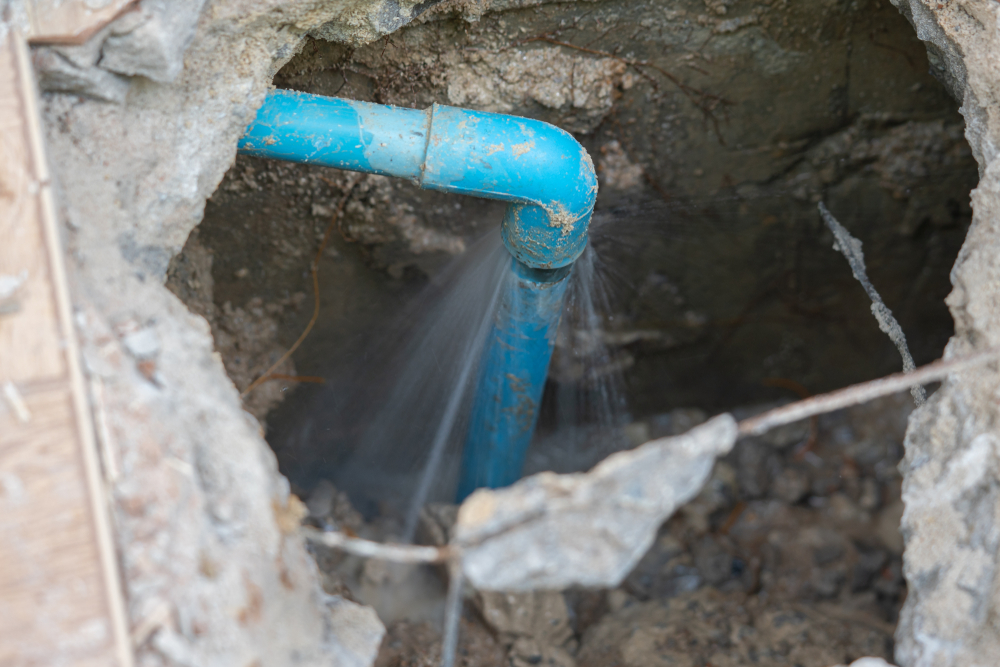We've uncovered this post pertaining to Leaking water lines directly below on the internet and believe it made sense to write about it with you in this article.

Early detection of dripping water lines can mitigate a prospective disaster. Some small water leakages may not be noticeable.
1. Examine the Water Meter
Inspecting it is a surefire method that helps you uncover leaks. If it moves, that indicates a fast-moving leak. This suggests you might have a slow leak that could also be underground.
2. Check Water Consumption
If you detect abrupt modifications, in spite of your intake being the very same, it indicates that you have leakages in your plumbing system. An unexpected spike in your bill shows a fast-moving leakage.
A consistent boost every month, even with the very same routines, shows you have a slow-moving leakage that's also gradually intensifying. Call a plumber to extensively inspect your building, particularly if you feel a cozy area on your flooring with piping beneath.
3. Do a Food Coloring Examination
When it comes to water usage, 30% comes from commodes. If the color in some way infiltrates your bowl during that time without flushing, there's a leak in between the tank as well as dish.
4. Asses Exterior Lines
Don't neglect to check your outside water lines also. Test spigots by affixing a garden hose pipe. Ought to water permeate out of the connection, you have a loose rubber gasket. Change this and also guarantee all links are limited. It will certainly aid get it expertly took a look at and also maintained yearly if you've obtained a lawn sprinkler system. One little leak can throw away lots of water and spike your water expense.
5. Analyze the situation and examine
Property owners must make it a routine to inspect under the sink counters as well as even inside cupboards for any bad odor or mold growth. These two warnings show a leakage so timely interest is needed. Doing routine inspections, even bi-annually, can conserve you from a significant problem.
If you know your home is currently old, maintain a watchful eye on your heating units, pipes, pipes etc. Check for discolorations and also deteriorating as many pipelines and also devices have a life span. They will also normally weaken due to tear and put on. Don't wait for it to escalate if you believe leaking water lines in your plumbing system. Call a professional plumber immediately so you do not end up with an awful mess in your house.
Early detection of dripping water lines can mitigate a prospective disaster. Some small water leakages may not be visible. Examining it is a surefire method that aids you discover leakages. One tiny leak can throw away lots of water and also spike your water expense.
If you suspect leaking water lines in your plumbing system, do not wait for it to intensify.
How to Know If Your Home Has a Hidden Leak
Water Meter Reveals Inexplicable Water Usage
If you’d like to test whether or not there’s a leak somewhere in your home, you can do this using your water meter. Here is how to conduct the test:
Don’t use any water in your home for at least 30 minutes; this also means not turning on faucets or water-using appliances.
Go outside, and check your water meter for activity.
If your water meter shows that there was activity, even though no one was using any water, this proves that there is a leak in your home.Visible Mold or Mildew Growth
Leaks behind walls create moist, dark environments that allow mold and mildew to grow and thrive. Eventually, you might see mold growth forming on the wall closest to a hidden leak.
If mold is growing in an area that receives a high amount of moisture, such as a bathroom, it may simply be an indication that better ventilation is needed. However, if you see mold growth on a wall or the ceiling in an area where you would not expect, you probably have a hidden leak.
Musty, Mildew Odor
Sometimes you might not be able to see the mold or mildew that is growing as a result of a leak. However, the smell can give the problem away just as easily. If you catch a whiff of something musty, there’s a good chance that old water is collecting somewhere in your home that you can’t see.
Stained/Warped Walls, Ceilings, or Floors
When your home soaks up water, a variety of red flags can become visible, including ceiling stains, bubbling drywall, warped walls, and sagging floors. While these issues can be caused by excess humidity, they can also be signs that a pipe or plumbing connection has started leaking behind your walls.
Inexplicably High Water Bill
After a while, you get a general sense for what your water bill should be. If you own a pool or sprinkler system, your bill will tend to be higher during summer. However, if you receive a water bill that seems especially high, and you can’t figure out what caused it, then you may have a hidden leak somewhere that’s increasing your bill.
https://www.plumbingjoint.com/blog/2019/july/how-to-know-if-your-home-has-a-hidden-leak/

I came across that post on Locating water leaks when doing a lookup on the web. Feel free to take the time to distribute this page if you enjoyed reading it. Thanks for your time. Visit us again soon.